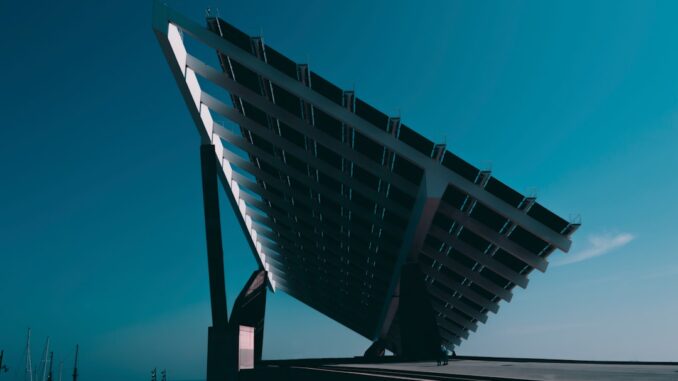
Summary
This article provides a comprehensive guide to optimizing energy efficiency in new building projects. From insulation and airtightness to leveraging natural light and smart technologies, each step contributes to a sustainable and cost-effective building. By following these strategies, developers can create buildings that are both environmentally responsible and financially sound.
Successful low-energy building design hinges on careful planning. Focus360 Energy can help.
** Main Story**
Let’s face it, creating energy-efficient buildings isn’t just about being green anymore; it’s about being financially savvy, too. Seriously, from the get-go, new construction that prioritizes energy savings can dramatically cut long-term costs and really boost property value. So, how do we do it? Well, let’s walk through some actionable steps for making your new building projects as energy-efficient as possible.
-
Prioritize Insulation: This is HUGE. Think of insulation as your building’s cozy sweater. Walls, roofs, floors – they all need it. Effective insulation creates a thermal barrier, reducing heat transfer. You won’t need to crank the AC or the heat all the time, which saves money. When choosing, go for high-performance materials and make sure they’re installed correctly. Opt for a high R-value. I mean, it’s like choosing a good winter coat; you want the warmest one you can get.
-
Ensure Airtightness: A leaky building is like trying to fill a bucket with holes. You’re just wasting energy. Sealing gaps around windows, doors – all those little cracks – is essential. Use weather stripping and caulking to create a solid barrier. Trust me, you’ll notice the difference. It’ll minimize drafts, which will reduce the strain on your HVAC system. Who wants to pay extra to heat or cool the outdoors? Not me.
-
Optimize Wall Thickness and Materials: Now, this is where it gets interesting. Thicker walls, especially if you’re using materials like concrete or brick, give you inherent thermal mass. They absorb heat during the day and slowly release it at night, naturally regulating indoor temperatures. It might cost a bit more upfront, but, the long-term energy savings? They can definitely offset that initial investment. Plus, thick walls give you more soundproofing. A win-win, really.
-
Control Interior Climate: It’s all about smart management. Think energy-efficient HVAC systems, optimized ventilation, and smart thermostats. Seriously, smart thermostats are a game-changer, because you can set different temperatures in different zones. It enhances comfort and it minimizes waste. For instance, you can keep the guest bedroom cooler since you’re not using it every day, you know?
-
Maximize Natural Light: I love walking into a building and seeing sunlight streaming in. Not only does it look nice, but it saves energy, too! Think about incorporating large windows, skylights, and design elements that just pull the light in. Position your windows strategically to optimize solar gain in the winter and minimize it in the summer. Plus, natural light makes for a healthier and more pleasant environment; it’s a mood booster.
-
Harness the Power of the Sun: This is clever design. Orient the building to maximize southern exposure, allowing for passive solar heating in the winter. Then, use shading devices – overhangs and awnings are your friends – to minimize solar heat gain in the summer. For the real go-getters, consider active solar technologies like solar panels for on-site renewable energy generation. Talk about long-term savings!
-
Embrace Smart Technology: We’re living in the future, people! Smart thermostats, lighting controls, and energy management systems; they give you real-time data on energy usage. That allows you to make informed decisions and optimize control. These technologies can automate energy-saving strategies and identify areas for improvement. And you know what that means? More money in your pocket.
-
Choose Energy-Efficient Equipment: Simple, right? Look for the Energy Star label on appliances, lighting fixtures, etc. It means they meet specific energy efficiency standards. You’ll save a ton of money by getting a high-efficiency HVAC system, water heater, etc.
-
Utilize Bioclimatic Architecture: Bioclimatic architecture tailors design principles to the local climate. It’s about paying attention to solar orientation, wind patterns, and natural ventilation. By doing so, you can optimize building performance and minimize energy needs. It’s pretty effective, I think. It can greatly reduce your reliance on mechanical systems, enhancing sustainability.
-
Implement Green Roofing: A green roof, or living roof, provides insulation, reduces stormwater runoff, and mitigates the urban heat island effect, which is a big problem in some cities. Plus, it improves air quality and adds aesthetic appeal. I once visited a building with a rooftop garden, and it was incredible. Talk about a conversation starter.
So, if developers incorporate these strategies, they’ll be able to construct energy-efficient buildings that are both financially sound and environmentally responsible. And it makes sense, lower operating costs, increased property value, and enhanced occupant comfort. It all adds up. Investing in energy efficiency? It’s an investment in a brighter future. In my opinion, its the only sensible thing to do.


“Thicker walls for soundproofing and temperature regulation? So, if I build a fortress, will I never need to adjust my thermostat or worry about noisy neighbors again? Asking for a friend who may or may not be planning a siege-proof, energy-efficient castle.”
That’s the spirit! While a full-blown fortress might be overkill, you’re on the right track. Properly insulated, thick walls absolutely contribute to stable indoor temperatures and noise reduction. Perhaps a well-designed “stronghold” is the energy-efficient future! Good luck to your ‘friend’!
Editor: FocusNews.Uk
Thank you to our Sponsor Focus 360 Energy